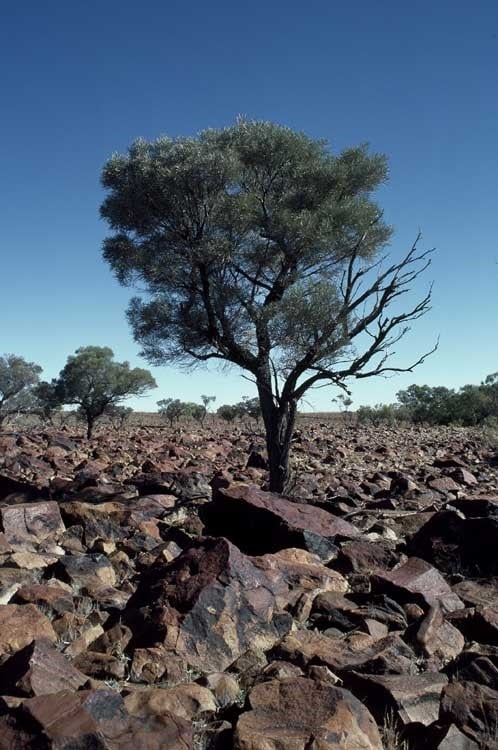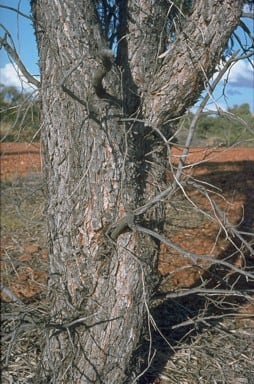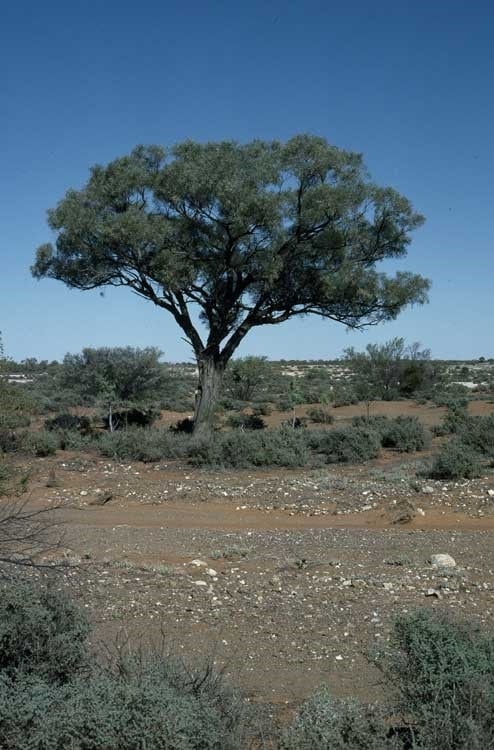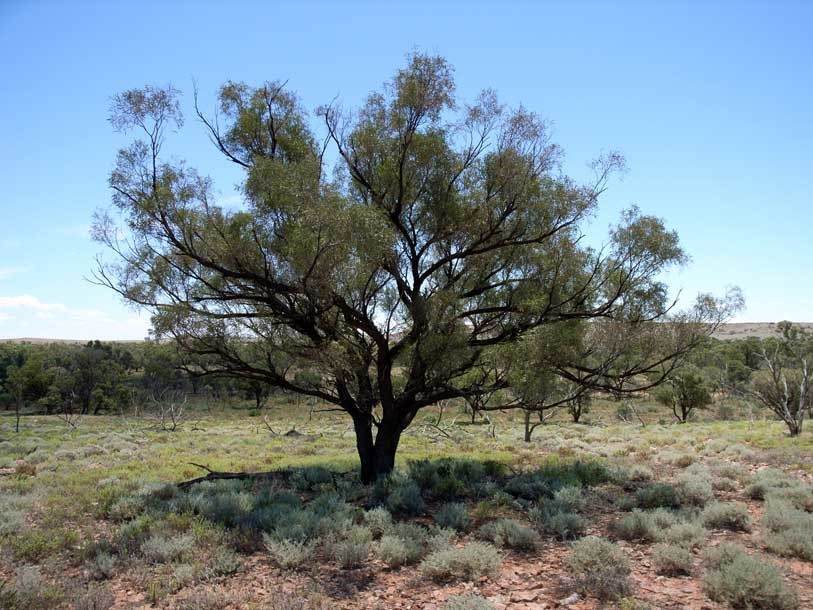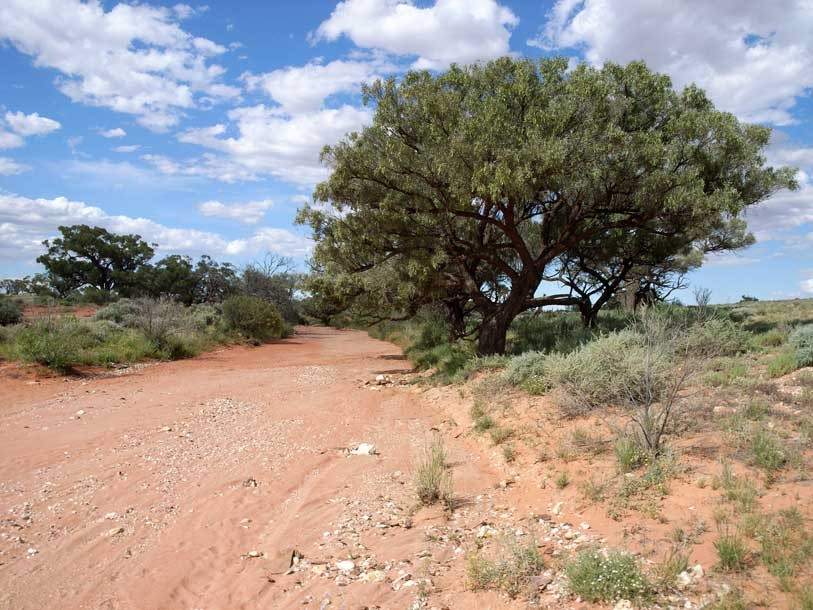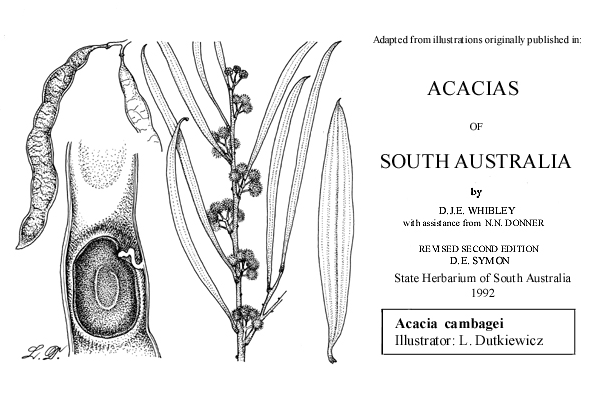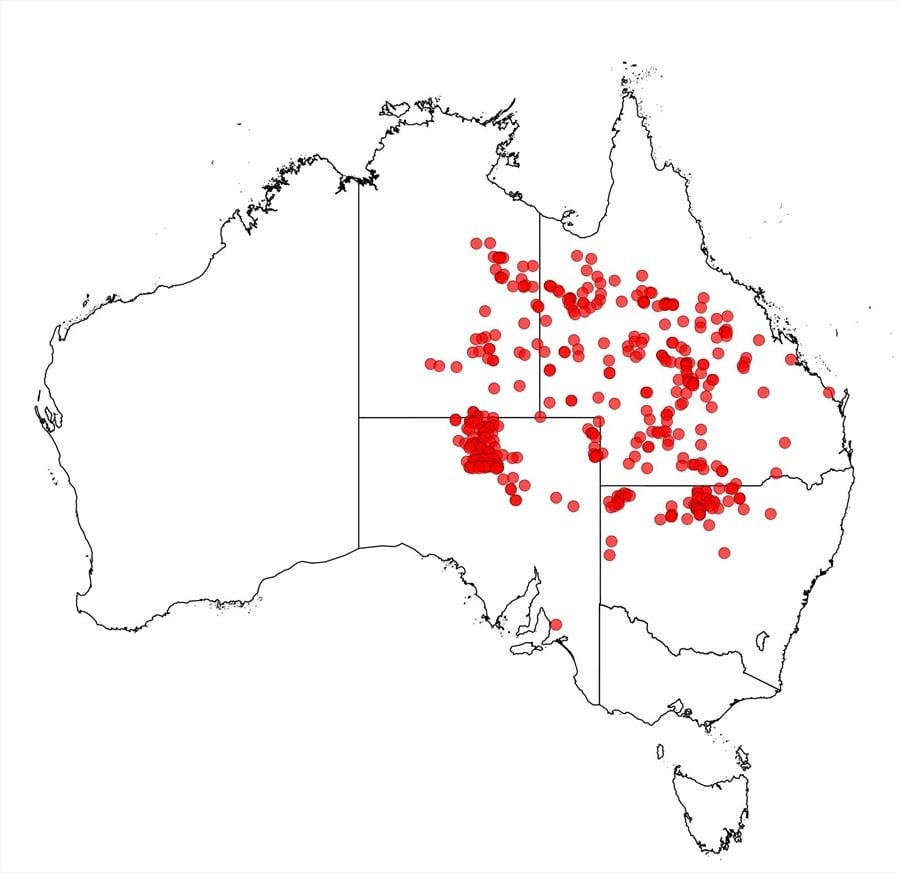Acacia cambagei R.T.Baker
WATTLE
Acacias of Australia
Common Name
Gidgee, Gidyea, Gidya, Gidgea, Stinking Wattle
Family
Fabaceae
Distribution
Widespread in arid and semi-arid eastern Australia, extending from central N.T. and north-eastern S.A. into central Qld and north-western N.S.W.
Description
Tree 4–15 m high, malodorous, spreading; crown moderately dense. Bark flaky, dark grey. Branchlets with a grey-white often flaking mealy bloom, glabrous or appressed-puberulous. Phyllodes narrowly elliptic to linear-elliptic, narrowed at both ends, straight or recurved, 4–14 cm long, 3–10 (–15) mm wide, coriaceous, with surface features as on branchlets, glaucous, 1–3 nerves more evident than the numerous closely parallel indistinct intervening ones. Inflorescences 4–10 (–20)-headed racemes; raceme axes 2–9 (–30) mm long, appressed-puberulous; peduncles (2–) 4–10 mm long, sparsely appressed-puberulous; heads globular, 3–5 mm diam., 12–25-flowered, golden. Flowers 5-merous; sepals free to 1/2-united; petals glabrous to appressed-puberulous. Pods narrowly oblong, ±straight, flat, to 13 cm long, 8–12 mm wide, chartaceous, coarsely reticulate, glabrous. Seeds longitudinal, broadly elliptic to oblong, flattened, 5–9 mm long, soft, peripherally crested, dull, dark brown; funicle slightly arillate.
Habitat
Tolerates a wide range of soils but occurs most commonly in dark cracking clay or loam, as scattered individuals or in dense, almost pure stands.
Specimens
N.T.: 62.3 km SE of Rankin, G.Chippendale NT7232 (NSW, PERTH). S.A.: Innamincka Stn, J.Vickery 2 (PERTH). Qld: c. 100 km NNW of Clermont, Adams 958 (K, PERTH); 32 km W of Adavale, L.Pedley 2492 (K, PERTH). N.S.W.: N of Bourke on road to Cunnamulla, J.G. & M.H.Simmons 1065 (NSW, PERTH).
Notes
The phyllodes of young plants lack the characteristic mealy bloom and are rather conspicuously hairy.
Related to and perhaps only subspecifically distinct from A. georginae; the two may be difficult to distinguish where their geographic ranges meet, fide L.Pedley, Austrobaileya 1: 200 (1978). The main morphological differences are that A. georginae has broader, curved to openly once-coiled pods, slightly larger seeds and generally more hairy petals. An important biochemical difference is that the foliage of A. georginae is highly toxic to livestock, whereas that of A. cambagei is used commonly as forage in some regions under drought conditions. The foetid odour of this species and A. georginae occurs also in A. pachycarpa. Also related to A. harpophylla. Acacia cambagei putatively hybridizes with A. tephrina SW of Longreach, Qld (H.Cartan s.n., BRI 739297).
FOA Reference
Data derived from Flora of Australia Volumes 11A (2001), 11B (2001) and 12 (1998), products of ABRS, ©Commonwealth of Australia
Author
Minor edits by B.R.Maslin
R.S.Cowan
This identification key and fact sheets are available as a mobile application:
URL: https://apps.lucidcentral.org/wattle/
© Copyright 2018. All rights reserved.
